Hawaii Neighborhood Guides
About Hawaii
If you’ve received orders to Hawaii, congratulations! Pack away your winter clothes and stock up on beachwear because paradise awaits. The island can be intimidating, but the good news is that it’s HAWAII and incredible places to live are plentiful.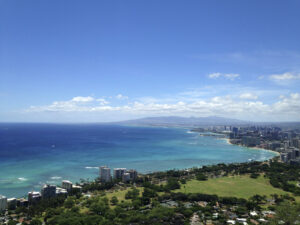
After the initial celebration that comes with orders to Hawaii comes the daunting task of researching where to live. This tropical archipelago can seem like a foreign land, and with good reason! Multiple languages are spoken on the islands, many distinct and culturally rich ethnic groups are represented, and “mainlanders” are regarded as tourists or visitors. The overwhelming advice we’ve received from military spouses who have been stationed here is to embrace the culture and customs of the island! The sooner you shed your “mainland eyes” and reframe your perspective, the sooner your love affair with this duty station can begin.
Yes, homes are more expensive here, but it’s a tropical paradise.
Yes, it’s practically like moving to a foreign country, but soak in that magnificently rich culture and history.
Yes, houses and construction practices are very different and few homes have central A/C, but you will eventually acclimate to the climate and learn to love your breezy lanai.
Yes, open windows and doors invite guests of the critter variety, but the geckos eat mosquitos (circle of life, Ohana, all that...).
Embrace the aloha spirit and go ahead and get on island time. Keep an open mind and a positive spirit and take advantage of the once-in-a-lifetime travel opportunities! You’ll leave the island better for it.
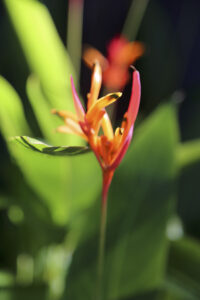 HOUSING
HOUSING
The first task to tackle is where to live. At almost 600 square miles, the island of Oahu is huge, and getting around isn’t terribly convenient. Figure out what your priorities are (beaches, places to hike, quiet refuge, etc.), and then start narrowing down locations from there. On-base housing is in extremely high demand, and it’s likely that you’ll be on a waiting list for a few weeks to several months! There is a healthy supply of short-term and vacation rentals available for this reason. Focus on where to live more so than the style or quality of the home. Location definitely trumps the size of the home, its age, and whether or not it has air conditioning (it probably won’t). Home values appreciate consistently here, so it’s not a terrible idea to go ahead and invest in a property. If you’ll be here for a few years, plan to rent it out when you PCS again. If you think you may return in retirement, it’s a great idea to look into purchasing a home. Be prepared for sticker shock, though. Spending $600,000 for a tiny fixer upper or upwards of $1M+ on a new home is not unheard of.
TRAFFIC
The traffic on Oahu is something you should really spend some time on, so consider this your crash course.
LESSON 1: DIRECTIONS
Hawaiians give directions based on landmarks, and the navigational descriptors they use date back to the way their ancestors oriented themselves on the island. Exchange east and west for windward and leeward. The island is home to the glorious Ko’olau Mountain Range that runs north/south, bisecting the island. Anything to the east of the mountains (Kaneohe, Kailua, MCBH) is considered to be on the windward side—the mountains block the incoming trade winds. Furthermore, you’ll also hear mauka (MOW-kah), meaning “mountain side” and makai (ma-KAI), meaning “oceanside.” These terms are used frequently to distinguish which side of the road or direction is in reference. Cross over, or through, the mountains and you’re on the leeward side, which is pretty much everything from Honolulu (or “town”) and beyond. The terminus for each of the highways is also interchanged for cardinal points (N, S, E, W). For example, “From town, go Ewa-bound on the freeway” means that from Honolulu you’ll get on H1 heading west.
LESSON 2: HIGHWAYS
There are only three main highways on the island: H1, H2, and H3. The main north/south artery is H2, and it connects the North Shore to Pearl City, where it then converges with H1. To get from the leeward side of the island (western coast) to “town” (Honolulu), you’ll take H1. Near Tripler Army Medical Center, H3 branches off of H1 and continues out to the windward side (eastern coast) to Kaneohe. Generally speaking, going east to west is considered reverse commuting, and if you can limit your time on the H1 and H2 (Honolulu traffic) you’ll be spending more time on the beach and less time in the car.
LESSON 3: ETIQUETTE
Because there are very few ways to get around, an accident or jam on one of the highways can cause major delays. Also, remember you’re on island time. Most drivers truly embody this, driving at or below the speed limits and allowing everyone to merge. Aloha spirit. Just take a deep breath and go with it! If you’re accustomed to city traffic, Oahu traffic shouldn’t be that much a departure from your norm, but if you can’t wrap your head around driving for 30 minutes to travel five miles, you’ll definitely want to make commute times a priority when looking for a home. Learn to give and accept the “shaka” hand sign in traffic! It’s basically a “my bad” or “thank you” for merging and is exchanged frequently. Make a fist, extend your thumb and pinky, and give a little wiggle—instant aloha spirit!
SCHOOLS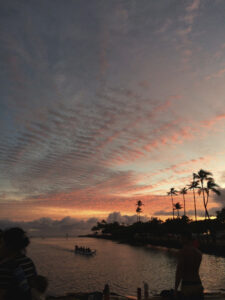
One of the top influencers for PCSing families when deciding where to live is school choice. We know how daunting this decision can be and want to help! Hawaii is the only state in the U.S. with a unified school system, meaning state taxes are distributed to all of the schools without regard to districts. Variance in class size, language barriers, and socioeconomic disparities are going to all be factors when looking at test scores and third-party rating systems. Many spouses report that the rankings don’t always reflect a school’s quality of education. While school ratings are a fantastic resource for test scores, class sizes, and a plethora of other data, they only tell part of the story. Interview the school, identify your child’s needs, weigh pros and cons of commute/specials/class sizes, and look for military-friendly staff and programs at the school. Private schools are popular and costly, and if you would prefer to opt private, you’ll find more variety and selection closer to Honolulu.
PETS
Fido has to “do some time” before he can enjoy the beach. To keep the island rabies-free, there is a mandatory quarantine for pets coming to Hawaii. Most pets should qualify for the five-days-or-less program, but some animals could spend up to 120 days in quarantine.
Looking at relocating?
Enter your information below and we will reach out to help the process.
Nearby Neighborhoods
Nearby Neighborhoods
Aiea
About
Aiea is a gorgeous stretch of land that brushes Pearl Harbor’s shores and extends eastward into the foothills of the Ko’olau Mountains. The lush vegetation and abundant sunshine made Aiea an ideal swath of land for sugarcane production in the late 1800s. The plantations became sugar refineries after WWII, but the last refinery closed in 1996. Today, Aiea is primarily a wealthy Honolulu suburb. Rising above sea level approximately 40 feet, Aiea has sweeping ocean views and enjoys the breezes that crest the mountains to the east.
Neighbors
Aiea is a small, tight-knit community. It isn’t known for having a lot of military families, but you will likely find higher ranking officers and retirees alongside local professionals and executives. The commute to Tripler Army Medical Center is ideal at only 10 minutes with normal traffic. Getting
to Honolulu takes only about 20 minutes, which opens up employment opportunities for spouses.
Neighborhood Feel
This magnificent stretch of paradise is meticulously maintained and easily rivals any other affluent suburb. The architecture and neighborhood structure are similar to what you’d expect on the mainland. There is a strong sense of community, and the quiet pace is a welcome reprieve from the hustle and bustle of the city.
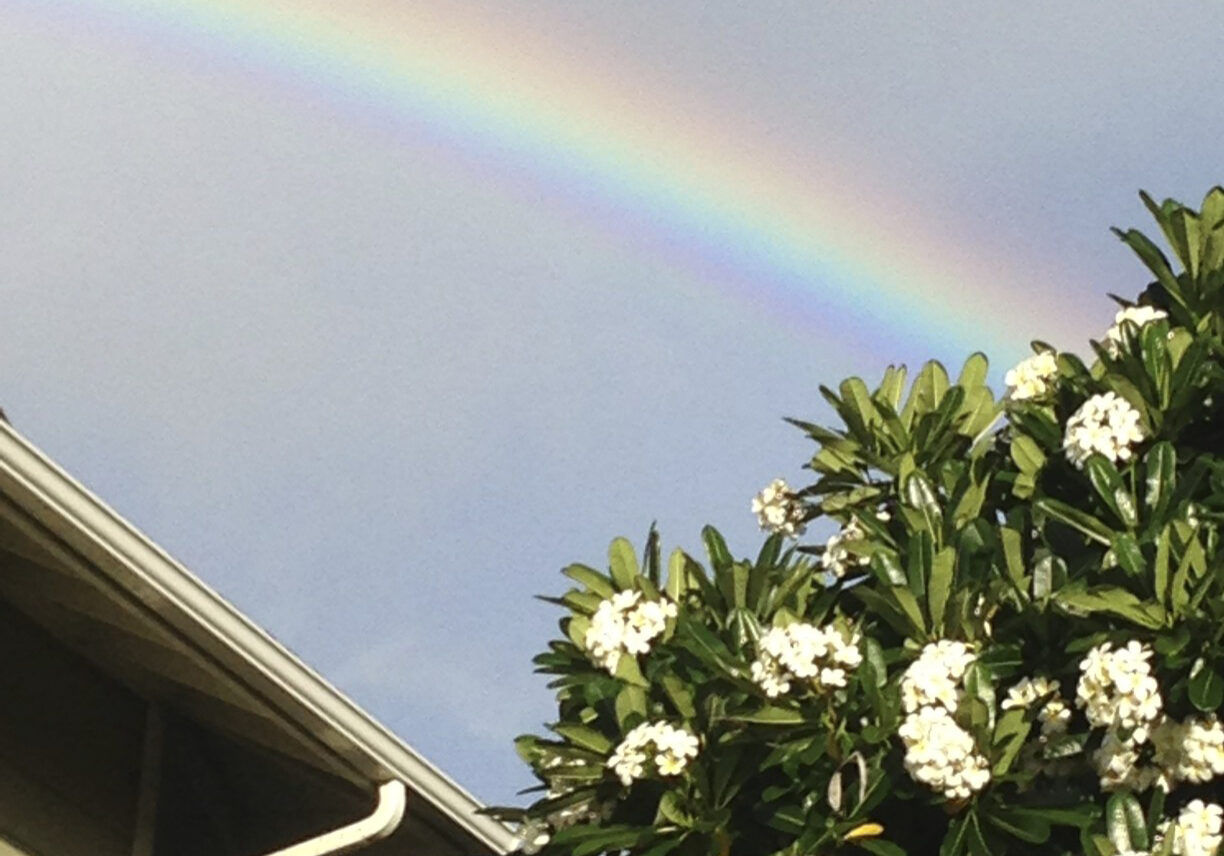
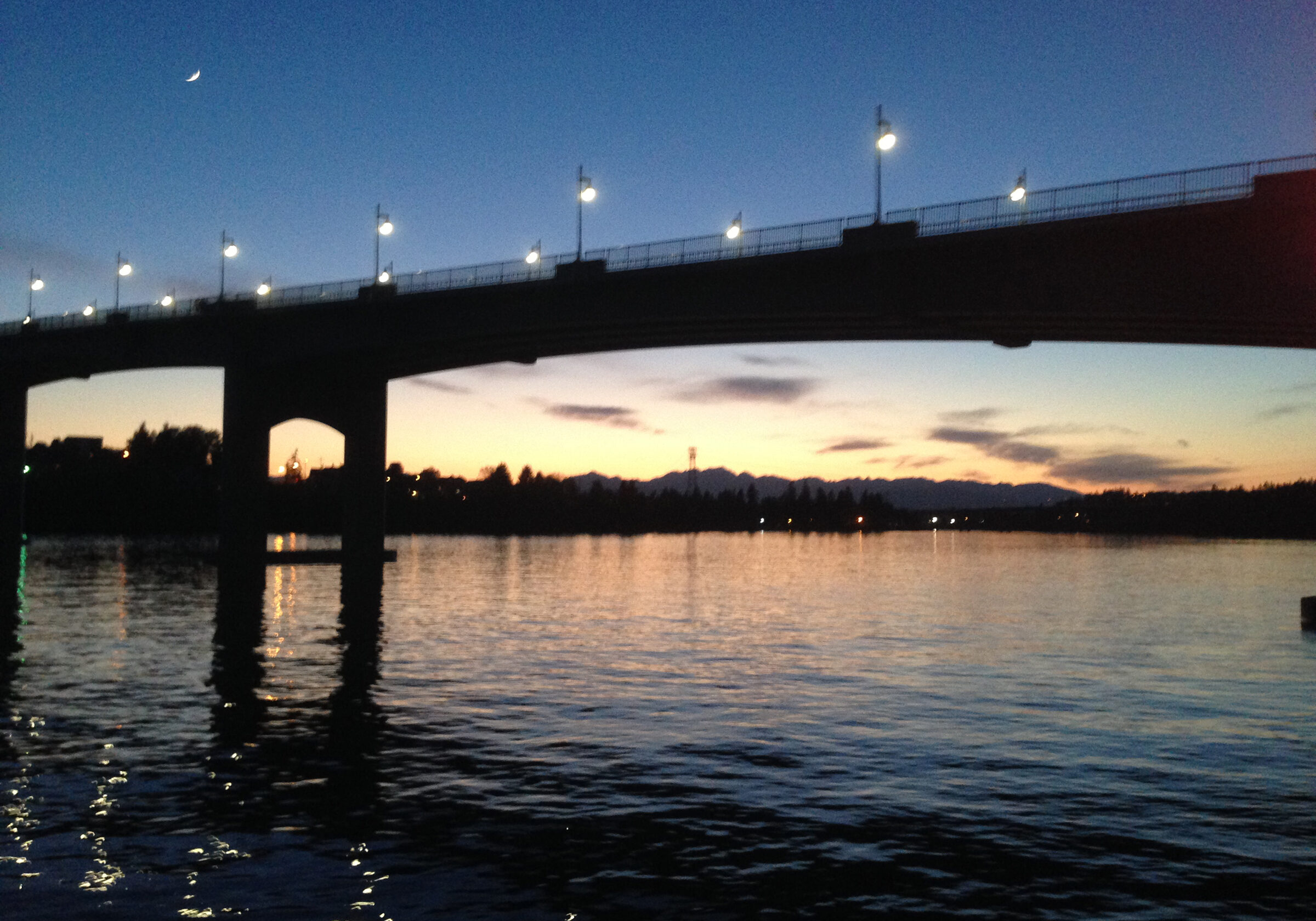
Neighborhood Info | Aiea
Highlighted Areas
- Aiea Heights
- Newton Estates
- Royal Summit
By the Numbers
- Population: 10,400
- Household Income: $110,000
Points of Interest
- Aiea Bay
- Aloha Stadium – Hawaii’s largest stadium and home to the University of Hawaii Rainbow Warriors Football
- Keaiwa Heiau – Ancient medicine shrine
- Pacific Aviation Museum
- Pearlridge Mall
Big Plus
- From Aiea, it’s a reverse commute north to Schofield Barracks and Wheeler Army Airfield, but probably most convenient to Tripler Army Medical Center.
- Close to Honolulu and the southern shore beaches as well as its own beaches in Aiea Bay.
Things to Consider
- It’s hard to find a home within BAH to rent or buy, and dual-income families are common.
- Get some elevation if you can! Homes that are higher up see savings in energy costs by capitalizing on breezes coming in from the east.
Ewa Beach
About
Ewa Beach (pronounced “eh-vuh”) is located 20 miles southwest of Honolulu on the tip of Oahu. This beach town on the leeward side of the island is teeming with new construction and subdivisions that are more “mainland” in style (read: double-walled construction and central air conditioning). This area is a great spot to find newer homes, gated communities, and glorious beaches. And it is all within a reasonable commute to Schofield Barracks, Wheeler Army Airfield, or Joint Base Pearl Harbor-Hickam!
Neighbors
There’s a great mix of locals, recent mainland transplants, and military residents in Ewa Beach. This is also a prime spot for retirees, so expect to see plenty of golf carts scooting around. Families love the area for its amenities, accessible shopping, and relaxing beaches. This area feels suburban, with nearby big-box stores, mainland-style architecture, wide streets, and planned communities.
Neighborhood Feel
Homes are newer, but smaller in size, and space is sold at a premium. Like most homes in Hawaii, yards are often small, but you’ll love the lanais, or Hawaiian verandas. The master-planned communities boast pools, parks, and pristine community landscaping. Conveniences like supermarkets, restaurants, and local shopping are close by and even within walking distance in some spots.
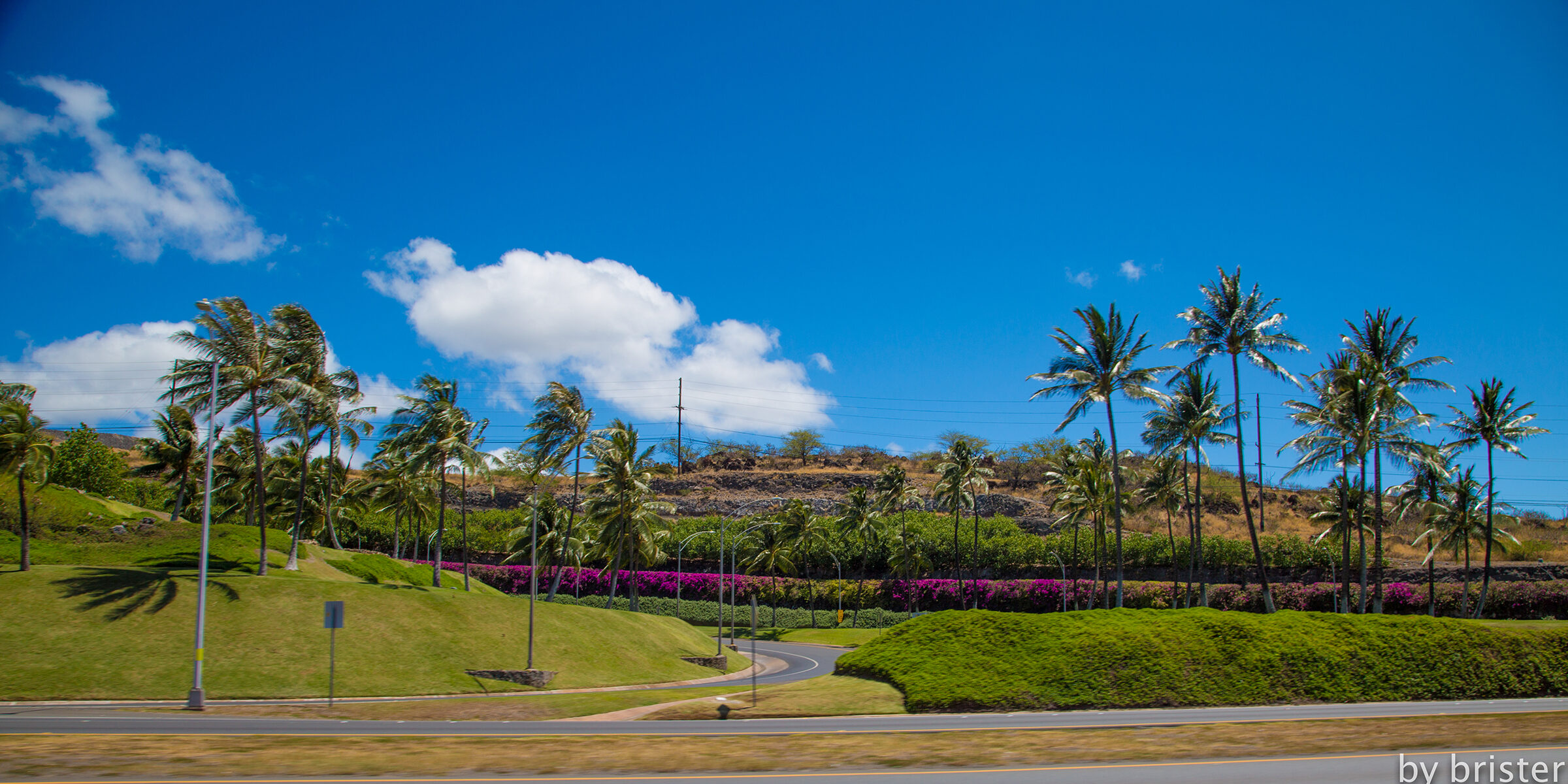
Neighborhood Info | Ewa Beach
Highlighted Areas
- Ewa by Gentry
- Ocean Pointe
- Westloch Estates
- Hoakalei
By the Numbers
- Population: 16,400
- Household Income: $100,200
Points of Interest
- White Plains Beach and Pu’uloa Beach
- Ewa Beach Park
- Hawaii Prince Golf Course and Coral Creek Golf Course
- Hawaiian Railway
Big Plus
- Mainland-style construction and neighborhoods are plentiful in Ewa, and most even have central air conditioning, a rarity for the island.
- This fantastic location boasts stellar beaches and a reasonable commute to Joint Base Pearl Harbor-Hickam, Schofield Barracks, or Wheeler Army Airfield.
- Amenities, shops, and restaurants GALORE are available in nearby Kapolei.
Things to Consider
- Be on the lookout for energy-efficient construction practices; many homes with central air conditioning have photovoltaic panels and/or solar hot water panels to offset electric bills.
- The weather tends to be hotter and drier on the leeward side because the mountains block the rain and the cooling trade winds from the east.
- Even though it’s only 20 miles “to town” (or Honolulu), it can take well over an hour to drive there during peak times because of the congestion on H1.
Honolulu
About
Hawaii’s capital city is home to most of the island’s population and is bursting with art, culture, history, culinary gems, famed beaches, world-class shopping, and breathtaking displays of nature. For the purposes of this guide, we’re referring to Honolulu as the region, not solely the urban epicenter. The area stretches from Pearl Harbor to Makapuu Point, encompassing the southeastern shores of Oahu, including the birthplace of surfing, Waikiki.
All the amenities you can dream of are available in Honolulu, and it also boasts some of the best shopping you can imagine. There are local markets and name brands, fine dining and farm-to-table restaurants, museums, art galleries, the Hawaii Symphony, and heavenly white sand beaches skirting glorious mountains. Tourism is a massive industry in Honolulu and is fed by the many resorts, events, festivals, and of course, the beaches.
Neighbors
Because of the vibrant nightlife, high cost of living, and other characteristics typical of city dwelling, inhabitants of downtown Honolulu tend to be younger professionals, students, singles, or young married couples. You will find a healthy population of service members distributed amongst an eclectic array of civilian residents. You may also find yourself living amongst tight-knit ethnic enclaves, which can vastly add to your experience here if you embrace it!
Neighborhood Feel
The city is bustling and alive with activity at all hours, and the incessant traffic adds a layer of chaos and noise to urban living. In “town” you’ll find mostly high-rise condos and apartment buildings. The suburbs are sprawling eastward, with single-family homes located farther from downtown. The type of construction in Honolulu is similar to that found on most of the island and may
be a shock to “mainland eyes.” Central air conditioning is rare, particularly in single-family homes, and space is sold at a premium. There are some really great walkable areas, though, and the warm weather welcomes you outdoors year-round.

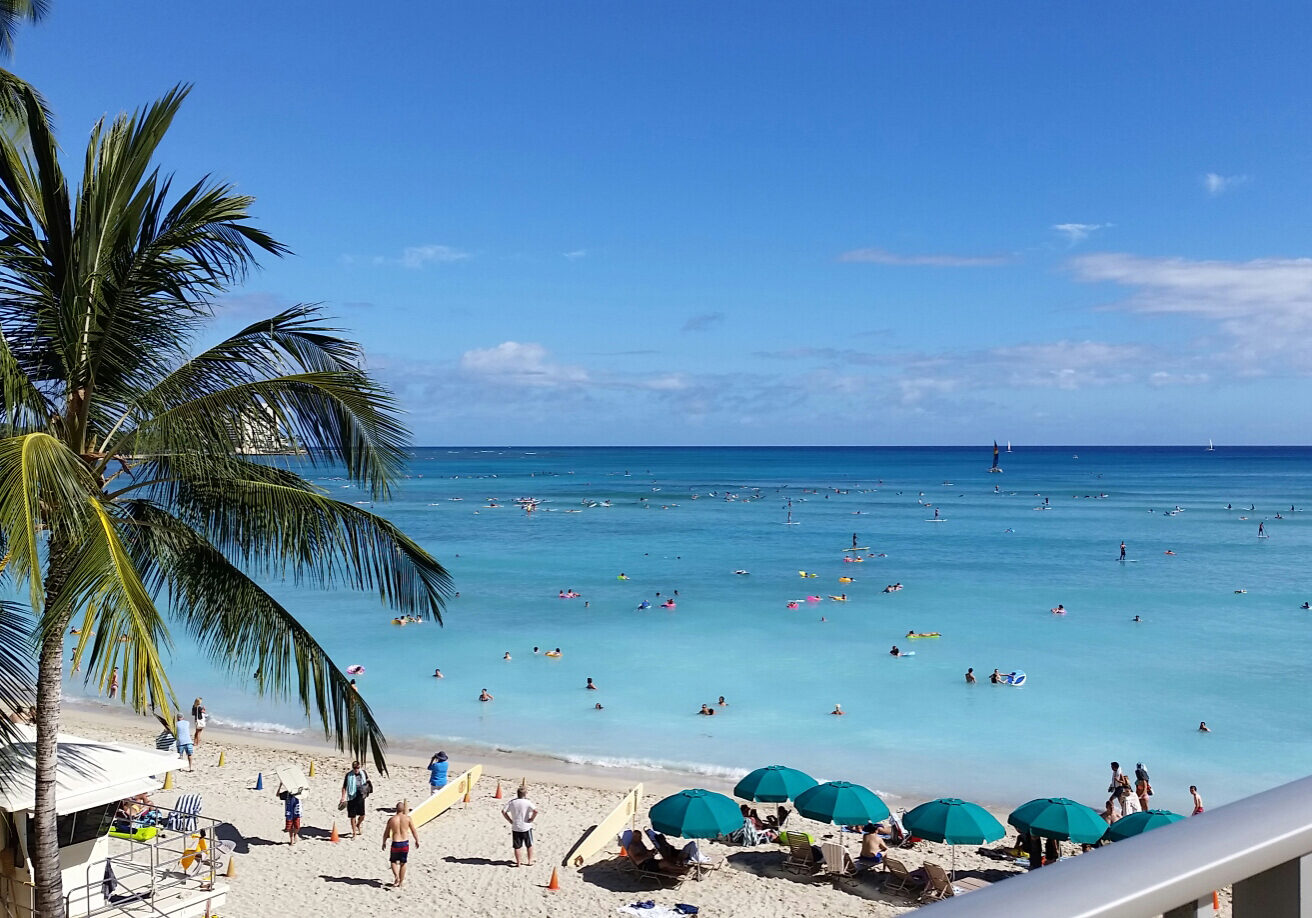
Neighborhood Info | Honolulu
Highlighted Areas
- Hawaii Kai – Ultra-luxe living, but less expensive than Kailua or Diamond Head
- Waialae – Predominantly multi-family dwellings (condos, apartments)
- Aina Haina – Chic beachside luxury
- Port Lock – Pricey, posh coastal hideaway
- Waikiki – Very urban surf mecca with high-rise Apartments
By the Numbers
- Population: 405,000
- Household Income: $76,000
Points of Interest
- Waikiki, Waialae, Kuhio, and Kawaikui Beaches
- Ala Moana
- Magic Island
- Children’s Discovery Museum
- Diamond Head
- Downtown Honolulu and Chinatown
- National Memorial Cemetery of the Pacific
- Iolani Palace
- Hunauma Bay Nature Preserve
- The Kalona Blowhole
- Koko Head
Big Plus
- Honolulu has a variety of public schools to choose from and a higher concentration of private and charter schools than other areas on the island.
- Thriving art scene and robust cultural and culinary offerings add to the quality of life.
- Rich in history, this area is replete with displays commemorating Hawaii’s native and modern heritage.
- Ala Moana calls Honolulu home and is the largest open-air shopping center in the world.
Things to Consider
- Be prepared for sticker shock. Not only is the area pricey, but you’ll also be shocked at how little your money buys. This is not the place to pocket BAH, but city life can be worth it for some!
- The traffic is formidable and should be a serious consideration. Parking is challenging, and garages are very expensive. Street parking is considered prime real estate.
- Like any other urban center, you need to take the good with the bad. We recommend doing your research and not renting or buying sight unseen.
- Young singles and couples tend to gravitate to this area for the social scene and active nightlife.
Kailua
About
Travel east to the Windward Coast, cross over the Ko’olau Mountains, and shed the fast-paced city chaos and hustle. Kailua is a quiet seaside refuge that enjoys epic views of the Pacific on one side (the makai side) and lush mountains on the other (the mauka side), all with the added benefit of the magnificent, cooling trade winds! In Kailua Bay, the turquoise ocean meets a famed crescent-shaped, white sand beach that will simply take your breath away.
Neighbors
In Kailua, you’ll meet active, laid-back locals as well as beach-loving military families. Young artists, affluent professionals, and wealthy retirees flock to this health-conscious and eco-friendly coastal town. Water sports, such as windsurfing, are popular, and this area is very family (and dog) friendly.
Neighborhood Feel
Kailua is a small town that embodies a beachy, laid-back lifestyle. The neighborhoods typically date back to the 1960s and are not quite as densely populated. Single-wall construction is the norm here and central air conditioning is rare, but not often needed. Living on the windward side, you’ll catch the breezes to cool your home economically. Homes with ocean frontage, ocean access, or ocean views are more expensive. There’s a Whole Foods, a Target, a fantastic hospital, and tons of quaint little beachside shops and charming strip malls, including an old Macy’s that has recently been converted into new shops and restaurants.
Neighborhood Info | Kailua
Highlighted Areas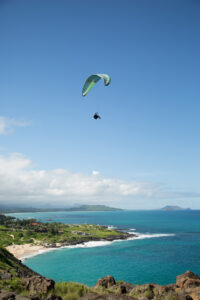
- Lanikai
- Beachside
- Enchanted Lakes
- Maunawili
By the Numbers
- Population: 40,500
- Household Income: $114,300
Points of Interest
- Nuuanu Pali Lookout
- Lanikai Beach
- Kailua Beach Park
- Kailua Town
- Pillbox Hike
Big Plus
- Kailua is only a 10-minute drive to Marine Corps Base Hawaii and an easy commute to Joint Base Pearl Harbor-Hickam on the H3, which is much less congested than the H1.
- Being on the windward side, you’ll have the trade winds to keep you cool. Open those windows and live as high up as you can to take full advantage of nature’s air conditioning!
- Kailua is a thriving beach town, with trendy shops, local restaurants, and small-town character. An upscale grocer, farmers’ market, amazing pastry and coffee shops, and talented local artisans’ studios round out the eclectic commercial offerings.
Things to Consider
- Be prepared for sticker shock. You’ll be hard-pressed to find a single-family home under $1M in Kailua, and that’s the fixer-upper rate.
- Homes are packed in pretty tightly, and the neighborhoods are dense.
- The windward side sees more rain, though light, than the leeward side. However, with the rain come super green landscapes with exotic flora and lush mountainsides.
Kaneohe
About
Nestled just above Marine Corps Base Hawaii on the lush windward side of the island, Kaneohe is a popular choice for military families looking to embrace the slower pace of island life. Kaneohe means “bamboo man,” and the area is fabled to have been named after the man who created the bamboo nose flute. In the late 1800s, rice and taro were primary crops and cultivated heavily in this area, later to be replaced by pineapple farming.
However, the negative environmental impacts of farming and competition eventually tanked Kaneohe’s agricultural resources, and the area became primarily residential. The arrival of the railroad and navigable roadways made Kaneohe more accessible, and in 1960 the Likelike Tunnel (or Wilson Tunnel) was opened through the Ko’olau Mountains to ease commutes and bring even more residents to this stunning locale.
The lifestyles and views in Kaneohe are comparable to those found in Kailua, but at slightly more affordable prices. The pace is slower here than in cities farther south, but there are still some shopping and business districts in the area. The windward side sees more rain than the rest of the island, producing lush and exotic flora, and the topography is dramatic. Mountains with cliffs and sheer rock faces rise up abruptly from the beach. The cooling winds and still
waters of the bay make this an ideal spot for boaters, fisherman, or water sports enthusiasts.
Neighbors
Kaneohe is home to a very diverse population. Being so close to Marine Corps Base Hawaii and slightly more affordable than Kailua, Kaneohe also has a significant military population. Families love the area for the calm beaches and slower-paced lifestyle. You’re also likely to have neighbors who commute to “town” (Honolulu). Coming from the windward side into town on H3 is a standard commute, but it’s not as busy, making Kaneohe a popular Honolulu suburb.
Neighborhood Feel
The area is rich in culture and history, and many locals trace their ancestry back to migratory plantation workers. The area is fairly densely populated, so the houses can seem pretty close together and street parking is difficult to come by. Kaneohe has a more industrial, blue-collar feel and, like on most of the island, single-wall construction is the norm.
Neighborhood Info | Kaneohe
Highlighted Areas
- Halekou
- Ahuimanu
- Mahinui
- Keahala
- Lilipuna
By the Numbers
- Population: 37,400
- Household Income: $108,800
Points of Interest
- Kaneohe Bay Sandbar
- Valley of the Temples
- Windward Mall
- Kualoa Ranch
Big Plus
- Kaneohe is just a 10-minute drive to Marine Corps Base Hawaii and an easy commute to Joint Base Pearl Harbor-Hickam on the much less congested H3.
- Being on the windward side, you’ll have the trade winds to keep you cool. Open those windows and live as high up as you can to take full advantage of nature’s air conditioning!
- Most homes have either mountain (mauka) or ocean (makai) views.
- Shopping and amenities are abundant.
Things to Consider
- The windward side sees more rain, though light, than the leeward side. However, with the rain come super green landscapes and lush mountainsides.
- Homes are packed in pretty tightly, and the neighborhoods are dense. Street parking can be hard to come by, and traversing the narrow streets congested with parked vehicles can be tricky.
Kapolei
About
Kapolei is the southwestern region on the leeward side of the island and is referred to as Oahu’s “Second City” for its popularity as a Honolulu suburb. It isn’t located terribly close to “town,” but the availability of affordable homes has made the commute worth it for some. Kapolei has a very suburban feel, and despite the rapid expansion, local planners are consciously trying to retain a small-town ambiance with a carefully designed town center and walkable amenities. Beautiful beaches, family-friendly neighborhoods, fantastic shopping, and proximity to several attractions should land Kapolei a spot on your short list.
People come from all over the island for the shopping in Kapolei, and if you live here you really don’t need to leave! There are local shops as well as every big brand imaginable. Want more? The Ka Makana Ali’i Mall and Kapolei Commons offer tons of shops, theaters, and restaurants, the Waikele Outlets are nearby, and tons of dining options are available.
Neighbors
There’s a very diverse workforce in Kapolei, with the majority of its residents commuting to Honolulu or to one of the several military installations on the island. There is industry in Kapolei, as well, so you’ll meet and live among people who work at the University of Hawai’i-West O’ahu campus, Queens West Hospital, and Ko’Olina resorts. Families
are everywhere, along with retirees. Like most of the island, you’ll find vibrant ethnic enclaves that offer exposure to rich cultural experiences if you embrace them!
Neighborhood Feel
There’s a very diverse workforce in Kapolei, with the majority of its residents commuting to Honolulu or to one of the several military installations on the island. There is industry in Kapolei, as well, so you’ll meet and live among people who work at the University of Hawai’i-West O’ahu campus, Queens West Hospital, and Ko’Olina resorts. Families are everywhere, along with retirees. Like most of the island, you’ll find vibrant ethnic enclaves that offer exposure to rich cultural experiences if you embrace them!
A serious housing boom is bringing new developments and attention to updating older homes. You’ll find a mix of master-planned communities alongside older, traditional Hawaiian homes at reasonably affordable price points—by Hawaii standards. Homes here have a little more yard space, but the area is fairly densely populated.
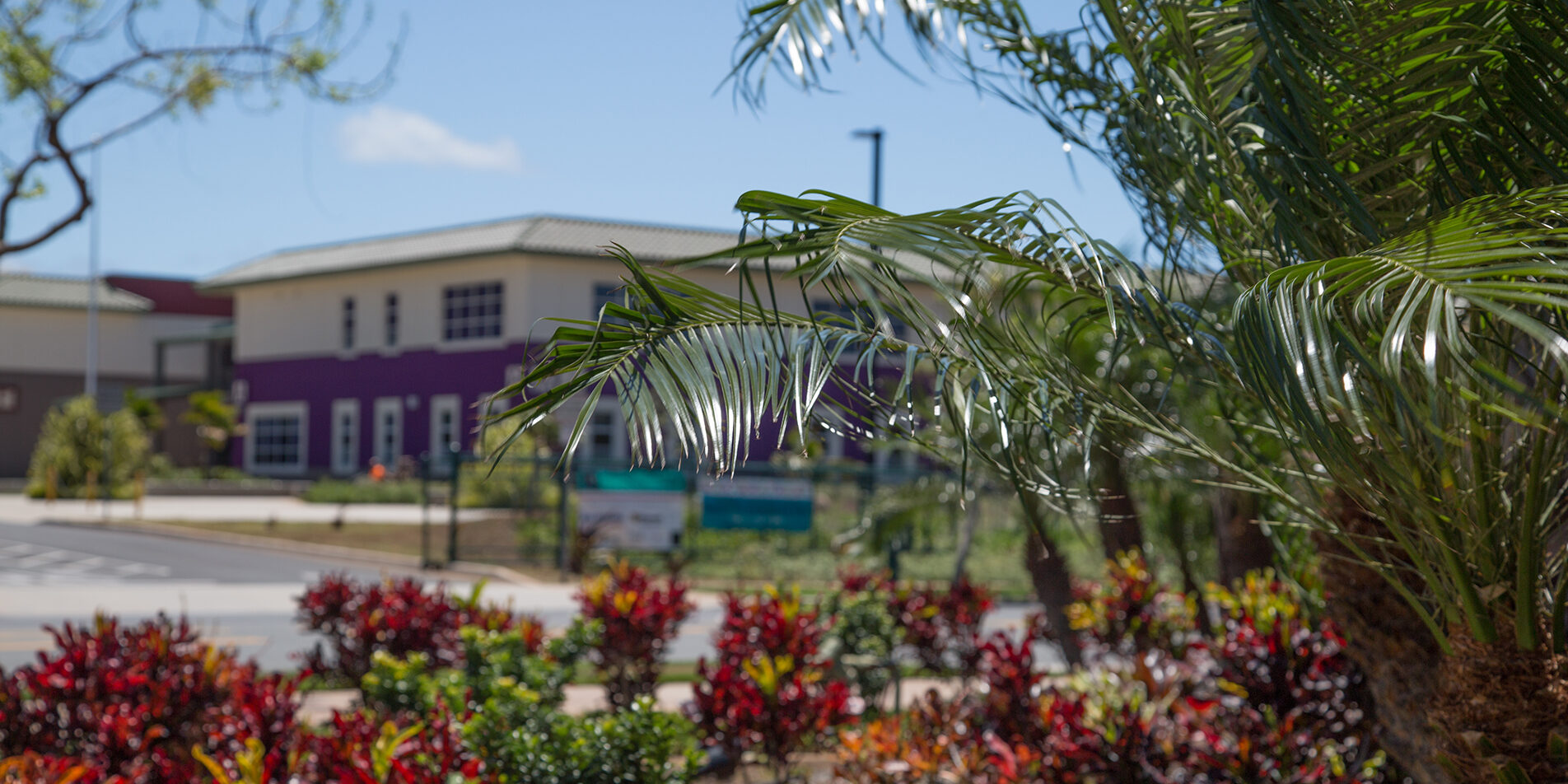
Neighborhood Info | Kapolei
By the Numbers
- Population: 21,400
- Household Income: $104,000
Highlighted Areas
- Nearby Ko’Olina
- Makakilo
- Mehana
Points of Interest
- Disney’s Aulani Resort
- Wet ‘n’ Wild Hawaii Water Park
- Ko’Olina Golf Club
- Kapolei Commons
- Ka Makana Ali’I Mall
Big Plus
- Kapolei is home to phenomenal beaches and popular shopping districts.
- Easy access to H1 and the rest of the island facilitates exploring and commuting.
- There’s a raved-about Army military treatment facility called Warrior Ohana Clinic located in Kapolei, thus negating the need to travel into Joint Base Pearl Harbor-Hickam or up to Schofield Barracks for prescriptions or checkups.
- New construction and mainland-style neighborhoods and homes are available here, and more are being developed every day.
Things to Consider
- Being on the leeward side of the island, the weather tends to be hotter and drier. Go ahead and adjust your inner thermostat because central air conditioning is a rare find. Open the windows and try to catch the breeze—but also know you’ll be inviting in nature. Embrace the island! And keep in mind that geckos eat the mosquitos...
- Ko’Olina and the Kapolei beaches are pretty big tourist draws. If you want to “go local,” your plans may be interrupted here.
Mililani
About
Mililani is positioned in the center of Oahu and far enough away from “town” to provide some breathing space. Many commute to Honolulu for work, but Mililani has all of the commercial shops, restaurants, and recreation you’d expect to find in a metropolitan suburb. It’s ideal for a commute to Schofield Barracks and Wheeler Army Airfield, but its easy access to H2 also makes it a contender for Joint Base Pearl Harbor-Hickam, Tripler Army Medical Center, and Fort Shafter.
Neighbors
Some of the areas are secluded and populated with pockets of the island’s wealthiest residents, but a large number of military families choose to make Mililani home. If you have plans to become a surf rat or live on the beach, this may be a little too landlocked for you. However, many welcome the much slower pace of life in Mililani.
Neighborhood Feel
Some of the areas are secluded and populated with pockets of the island’s wealthiest residents, but a large number of military families choose to make Mililani home. If you have plans to become a surf rat or live on the beach, this may be a little too landlocked for you. However, many welcome the much slower pace of life in Mililani.
Development in Mililani began in the 1960s, and the architecture in the older areas still reflects that era. Older homes have been updated and well maintained for the most part. There are newer, master-planned communities in Mililani, Mauka, and Launani Valley for those looking for personalized construction or newer builds. In the planned subdivisions, you’ll find active HOAs that boast amenities like pools, parks, and community centers, making them very family friendly. The homes are spacious, come with decent yard space, and are considered to be affordable—at least by Hawaii standards.
Neighborhood Info | Mililani
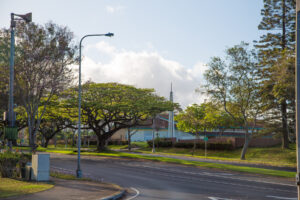 Highlighted Areas
Highlighted Areas
- Mililani Mauka
- Launani ValleyMililani Town Center
By the Numbers
- Population: 21,800
- Household Income: $95,500
Points of Interest
- Town Center of Mililani
- Mililani Dog Park
- Nearby Dole Plantation
Big Plus
- Mililani is close to Waikele, with its shopping, as well as North Shore, with its epic surfing.
- You can find any amenity imaginable without needing to leave town.
- Mililani has a robust town association (like a town-wide HOA) that maintains parks, pools, golf, and recreation. All of Mililani’s residents have access to the amenities, so renting in this area comes with added perks. There is a great sense of community here, and it is very family friendly.
Things to Consider
- Miliani is in the central valley and can be rather hot and arid.
- Traffic to get to any of the southern bases (any base other than Schofield Barracks/Wheeler Army Airfield) is going to be significant.
- Though the main attractions of the island are reasonably close, people who call Mililani home consider it secluded, and that could feel isolating for some.
- Homeowners pay dues to the Mililani Town Association, which acts much the same as a neighborhood HOA, but on a larger scale.
Pearl City
About
Pearl City is located 11 miles northwest of downtown Honolulu and occupies a large portion of the Pearl Harbor shoreline. Early Hawaiians called the area Pu’uloa, meaning “long hill.” They later called it Wai Momi, meaning “water of pearls” after the once abundant pearl-bearing oysters found in the harbor. The lush “long” hills near the harbor also became a prime spot for grazing cattle. However, runoff from the cattle and overharvesting of the pearls quickly decimated the thriving ecosystem.
Today, Pearl City is a popular destination for military families PCSing to Oahu. Being in the center of the island, it’s in a prime position for commuting to any of the island’s military installations. Additionally, the 95 feet of elevation above sea level helps to catch the coveted, cooling breezes from the windward side.
Neighbors
There is a diverse mix of military and locals in Pearl City, and most residents commute to either one of the bases or to Honolulu. This family-friendly area is bustling with activity, and all of your day-to-day amenities are easy to get to.
Neighborhood Feel
Pearl City is a busy place with a lot of people and even more traffic. Homes range in both age and price and are as eclectic as the residents. There are a significant number of condos and apartments here, and it is definitely more city-like than suburban. Rentals are very common, and you’ll find a lot of military families living in the area while waiting for more permanent housing. There is a diverse mix of military and locals in Pearl City, and most residents commute to either one of the bases or to Honolulu. This family-friendly area is bustling with activity, and all of your day-to-day amenities are easy to get to.
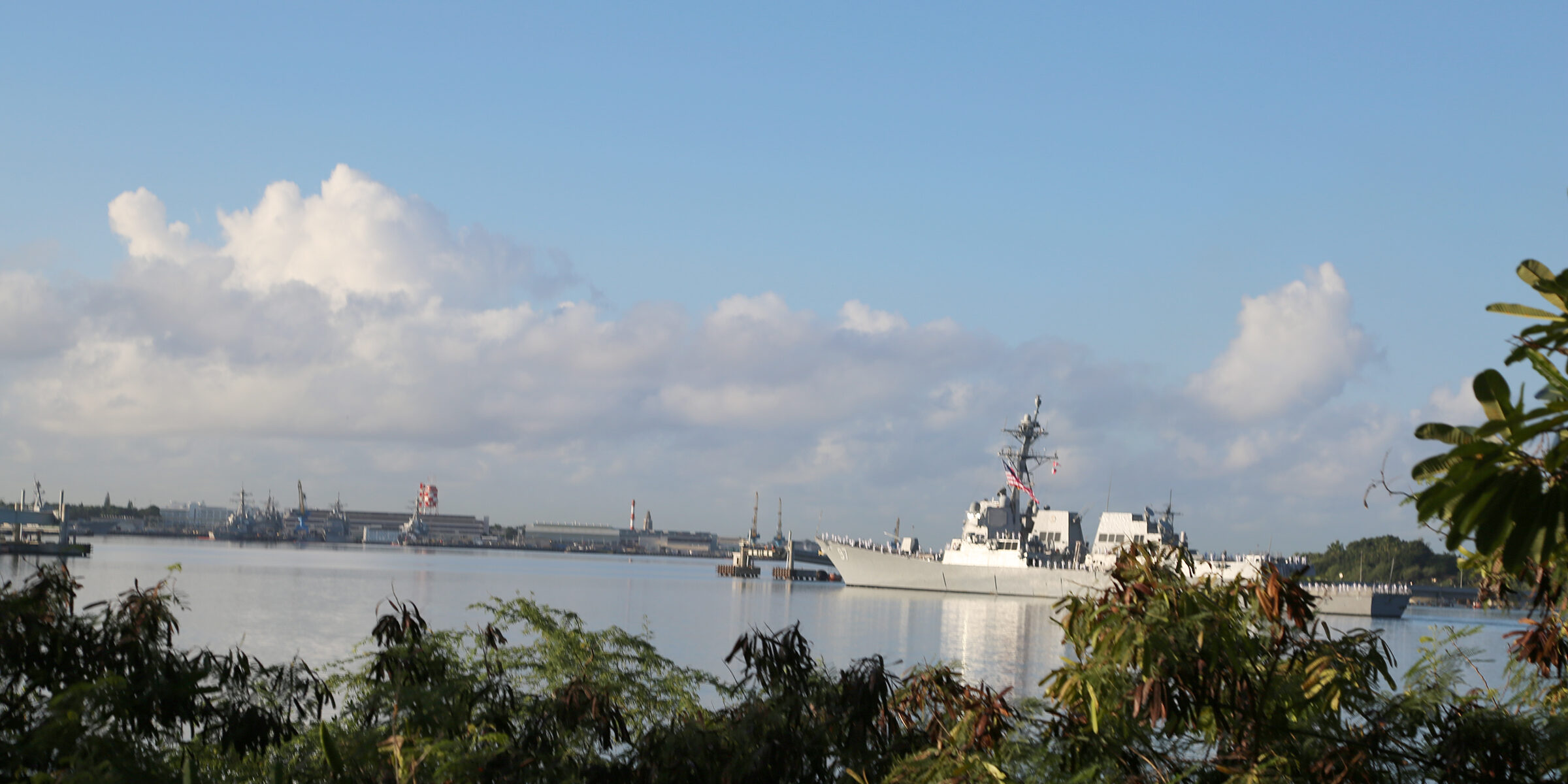
Neighborhood Info | Pearl City
Highlighted Areas
- Upper Pearl City
- Manana
- Pacific Palisades
By the Numbers
- Population: 45,300
- Household Income: $100,000
Points of Interest
- Pearl Harbor National Wildlife Refuge
- Kai Playground
- Kahana Valley State Park
- Pearlridge Mall
Big Plus
- Amenities are plentiful with box stores, a mall, supermarkets, a stadium-style movie theater, and many recognizable restaurant chains.
- Pearl City is literally in the center of the island, right at the convergence of two of the three main highways. Commuting to any of the installations on the island from here is reasonable, but ideal for Joint Base Pearl Harbor-Hickam.
Things to Consider
- Pearl City is a busy place with a ton of commuter traffic and commercial congestion. Getting around town can be trying, and with the H1 and H2 so near, you’ll be dealing with that traffic daily.
- Most people who live in Pearl City escape often to enjoy the beaches and quieter regions of the island. Not many people set out with Pearl City as their destination for the day.
- Get some elevation if you can! Homes that are higher up see savings in energy costs by capitalizing on breezes coming in from the east. The homes typically have single- wall construction and only single-room air conditioning units—if any.
North Shore
About
North Shore is known for its epic surfing, breathtaking beaches, and slow-paced, bohemian culture. As the name indicates, North Shore is located at the northern tip of Oahu, roughly 20 minutes from Schofield Barracks. You’ll find a lot of character in this quaint and relatively untouched area. Most of the island considers North Shore to be “country” due to its lack of amenities (shopping, dining, entertainment), but the seclusion is charming for some.
Neighbors
Singles, young couples, and families all adore the North Shore. If you are happy to spend your days close to home—and better yet, on the beach just steps from your door—North Shore is for you. It’s probably a stretch to commute to anywhere other than Schofield Barracks and Wheeler Army Airfield from here, but that’s not to say it can’t be done.
Neighborhood Feel
North Shore has an unmistakably bohemian vibe. The weather is dreamy, and the surfing is world-class. The local shops and restaurants exemplify the art and personality of this coastal area, and even the luxury homes trend toward simple and unpretentious. Even new construction is modeled after historic plantation-style architecture to preserve the area’s distinct character. Singles, young couples, and families all adore the North Shore. If you are happy to spend your days close to home—and better yet, on the beach just steps from your door—North Shore is for you. It’s probably a stretch to commute to anywhere other than Schofield Barracks and Wheeler Army Airfield from here, but that’s not to say it can’t be done.
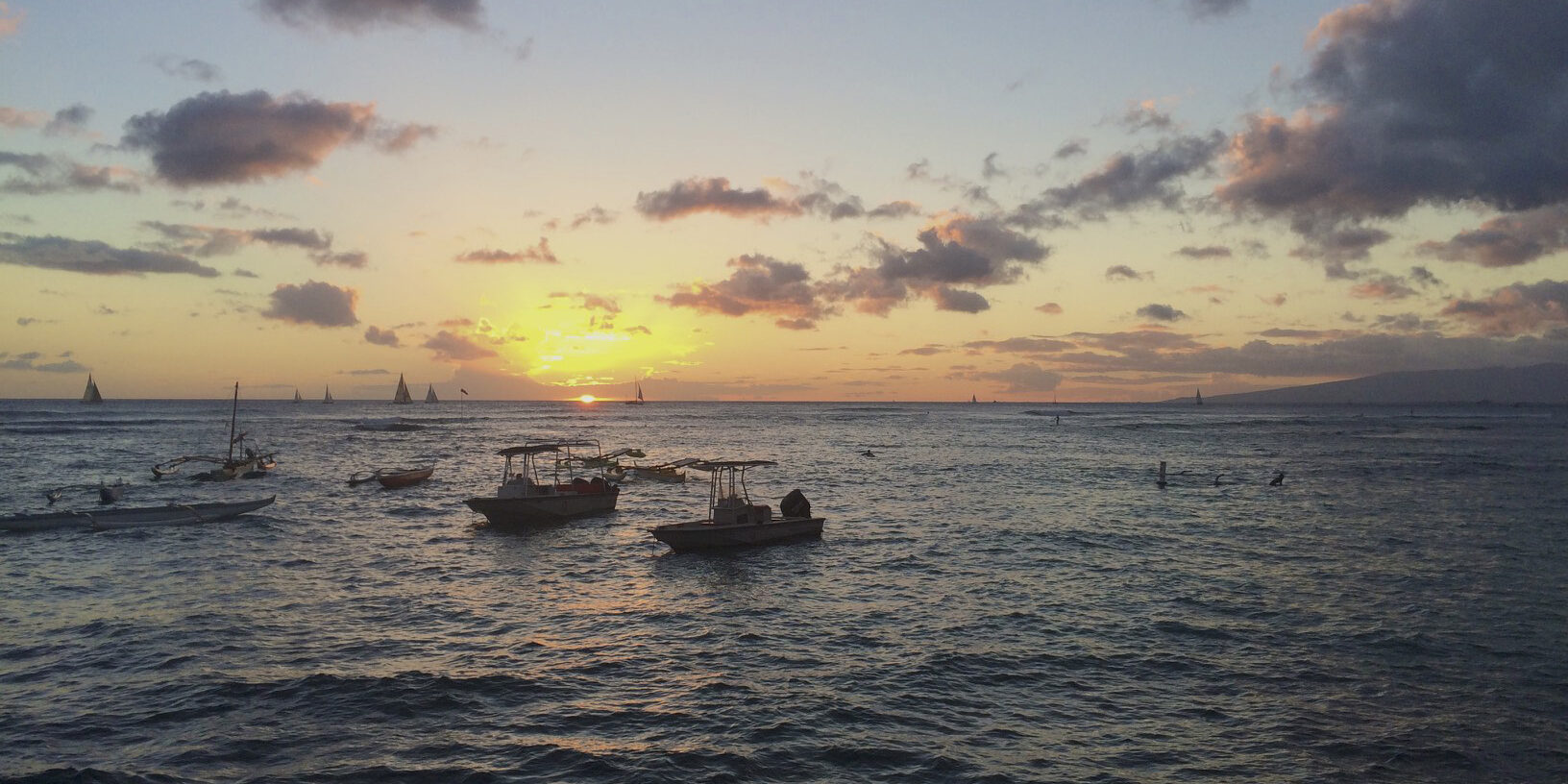
Neighborhood Info | North Shore
By the Numbers
- Population: 4,900
- Household Income: $71,800
Highlighted Areas
- Haleiwa
- Pupukea
- Waimea
Points of Interest
- Shrimp trucks in Haleiwa
- Matsumoto Shave Ice in Haleiwa
- Waimea Valley
- Haleiwa Joe’s
Big Plus
- This is picturesque Hawaiian beach living, with unbelievable surfing and low-key culture.
- If you love to stick close to home and you own more than two surfboards, North Shore is probably the place for you. It’s a reasonable commute to Schofield and Wheeler Army Airfield, but comes with a painful commute to any of the more southern bases.
Things to Consider
- There’s only one road in and out of the area, and if there are accidents or traffic on Kamehameha Highway, it can cause significant delays to an already long commute. North Shore is host to several big surf competitions, which bring a ton of congestion to the meager road system.
- Shopping and amenities are thin here, and North Shore intends to keep it that way. Small grocers and cute little restaurants are all around, but you will not find large chains for shopping. ● Stick to the tourist surf spots. Local surfers are pretty territorial with their beaches, and good luck breaking into that scene! Trust us—the waves are just as amazing where the tourists go to surf. You may encounter some cliquish groups of locals here, but be open to the area’s culture and respect the surf etiquette, and you’ll be fine!
Wahiawa
About
Wahiawa is located in the central valley between the Wai’enae and the Ko’olau Mountains and is surrounded on three sides by a reservoir that waters the iconic Dole Pineapple Plantation. It’s a very small town that’s bordered by Schofield Barracks and Wheeler Army Airfield.
Neighbors
There’s a high concentration of military here because of the proximity to post(s). Like throughout most of the island, you’ll find vibrant ethnic enclaves that can offer exposure to a rich cultural experience if you make the effort to embrace it.
Neighborhood Feel
Wahiawa is in the center of the island and has an agrarian/industrial feel. Affordable housing can be found here, but take care to know where you’re buying. Older, affordable homes are available here, but we recommend not buying sight unseen. There are a lot of apartments and multifamily dwellings in addition to some older single-family homes. There’s a high concentration of military here because of the proximity to post(s). Like throughout most of the island, you’ll find vibrant ethnic enclaves that can offer exposure to a rich cultural experience if you make the effort to embrace it.
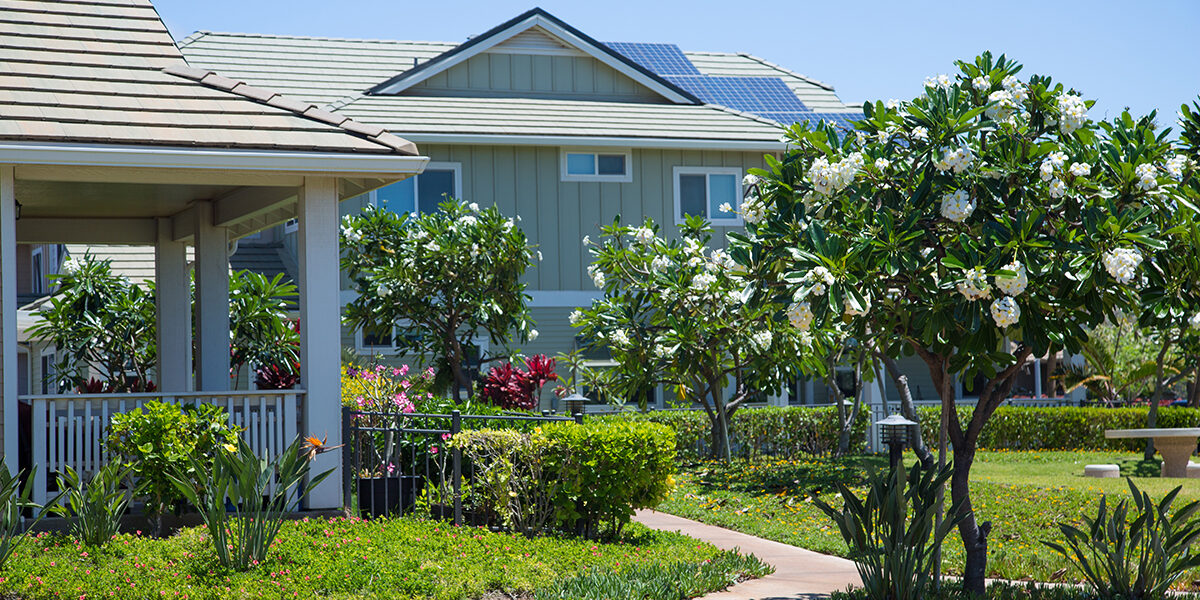
Neighborhood Info | Wahiawa
By the Numbers
- Population: 18,700
- Household Income: $62,100
Highlighted Areas
- Wahiawa is a really small town, and the homes are fairly concentrated, making it difficult to differentiate between separate “neighborhoods” or subdivisions.
Points of Interest
- Dole Plantation
- Polynesian Cultural Center
- Ka’ala, the highest peak on Oahu
- Wahiawa Botanical Garden
Big Plus
- Wahiawa is extremely close to Schofield Barracks and Wheeler Army Airfield and is also convenient to North Shore.
- Affordable homes can be found here, but it is not recommended to purchase or rent sight unseen.
Things to Consider
- Houses are more affordable here, but definitely do your research.
- Traffic is heavy, especially on the main road leading into the bases. Noise can sometimes be an issue depending on how close your home is to the main roads.
- Older homes in Wahiawa and elsewhere on the island are built with “single-wall construction.” This is the main reason for the lack of centralized air conditioning (nowhere to run the ducts) and also makes it hard to cool the home even with window or single-room units.
Looking at relocating?
Enter your information below and we will reach out to help the process.
7 Reasons You Should Consider Buying a Home
1. TAX ADVANTAGES
To encourage homeownership, the IRS has provided many tax breaks for owning a home. Credits may be available for specific home improvements, such as using clean energy or for qualified first-time home buyers. The way most homeowners see those advantages is through income tax itemization and deductions like mortgage interest and real estate taxes.
2. STABALIZE MONTHLY HOME COSTS
Owning your own house is one of the safest bets on stabilizing your monthly home costs. There’s no worry of rent getting increased significantly after each year of living in someone else’s home. Additionally, when you answer to yourself, there is no worry of landlord changes or unexpected lease termination.
3. HOUSE HACKING
Generally speaking, house hacking is a smart strategy that involves renting out a portion of your primary residence as a means of generating income to offset your own living expenses. Think turning your finished basement or mother-in-law quarters into an AirBnB! Or consider purchasing a multi-unit duplex or triplex: live on one side and rent out the other! If your home making money while you’re living in it doesn’t sound like your thing, there’s always renting it out after you PCS as an income generating investment property.
4. Increased Privacy
Generally speaking, house hacking is a smart strategy that involves renting out a portion of your primary residence as a means of generating income to offset your own living expenses. Think turning your finished basement or mother-in-law quarters into an AirBnB! Or consider purchasing a multi-unit duplex or triplex: live on one side and rent out the other! If your home making money while you’re living in it doesn’t sound like your thing, there’s always renting it out after you PCS as an income generating investment property.
5. Pets Are Welcome!
For those who choose to rent instead of buying, it can be extremely difficult to find rentals who allow for your
four-legged, furry friends. Landlords often require hefty pet deposits or place heavy restrictions on the number of pets and breeds they allow—if they will even allow pets. When considering quality of life, including beloved pets and the indoor and outdoor space available to them matters. Having the flexibility to include ALL members of your family as a homeowner is priceless!
6. Pride of Ownership
One of the greatest benefits of owning your own home is the pride of ownership that comes along with it. Not only are homeowners more inclined to take good care of their investment with routine maintenance and cleaning, but also they are free to make design choices ranging from hanging artwork on the walls, to paint colors, to customization of closets, electronics, and more. As military families who relocate frequently, having your home reflect who you really are feels important.
7. Safe and Stable Long Term Investment + Forced Savings
Owning a home has historically been one of the safest, lowest risk financial investments that tends to have long-term stability and success. As your home value appreciates and your mortgage balance decreases, what’s left is growing equity with an eventual paid off home. Making a monthly house payment is akin to setting aside a specific amount each month into a savings account—it’s a little difficult to access in the moment, but over time it can build into something significant in the form of equity.

FIVE RESOURCES TO HELP YOU IN YOUR RELOCATION PROCESS
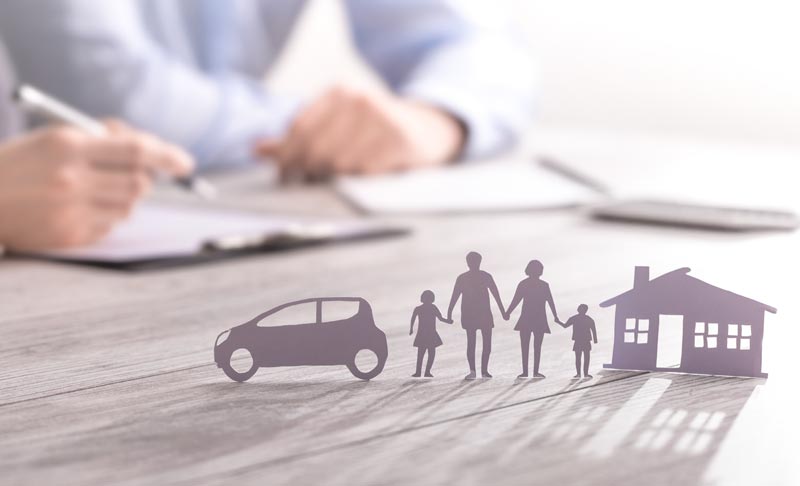
Your PCS is underway!
The home buying and moving transition process has begun. Now what? If it feels like there are a million things to do, don’t fret because you don’t have to do them all yourself. During the relocation process, there are many service providers that can assist you in making your move a smooth one.
Consider these five resources to help you in the process
1. MOVING COMPANIES
Sure, the military offers transportation and relocation services, but many service members decide to coordinate the transfer of household goods themselves. Not only can you often earn money on the difference between moving costs and weight allowances, but you can be assured that you have more control over your belongings. Services that moving companies offer can range from delivery of boxes and pods for the “you-pack” model all the way to full-service logistics companies that will do all of the packing, loading, driving, and unpacking for you.
2. STORAGE
Whether you need to store your household goods for a few weeks until you close on your home or you decide that you have more stuff than square footage, storage companies abound. Sizes, conditions, and contracts vary widely so be sure to do your homework before you commit. Particularly in climates with extreme cold, heat, or humidity, it is important to consider using only climate-controlled storage to ensure the protection of your furniture and temporarily unused items.
3. TEMPORARY HOUSING
It is not uncommon for there to be a short gap of time during a military move between when you arrive at your new duty station and your new home being available to inhabit. No longer are hotels the only option for sticking out a few days or weeks during the wait. Vacation Rentals by Owner (VRBO) and Airbnb are great options to make you feel more at home while you wait for your home. In fact, why not take advantage of seeing your new city through the eyes of a tourist? Find a location near new local attractions and dining and enjoy a few days of getting to know the lay of the land.
4. USPS/IRS
Once you get settled in at your new home, it’s important that you alert agencies that will make sure your current and up-to-date address is on file. The United States Postal Service (USPS) and the Internal Revenue Service (IRS) are two of the most important and by doing so, any important mail or documents in your name should be forwarded or sent along to your new address. It’s also a good idea to notify banks, credit card companies, and other debt collectors of a change of address. These days nearly all of these transactions can be handled online.
5. DISCARD & DONATE SERVICES
No matter how much you purge, toss, organize, minimize, or donate before you pack up the moving truck, it never fails that after you get unpacked on the other side there seems to be more stuff to declutter. Discard and donate services can help with this. Many are a phone call away and will happily come to your residence for a pickup. Others are structured where you simply drop off at a store. A lot of these services are charitable organizations and will offer you documentation for your own taxes based on your donation. It’s a win-win: you downsize by donating, and someone else benefits from your use of your items.

